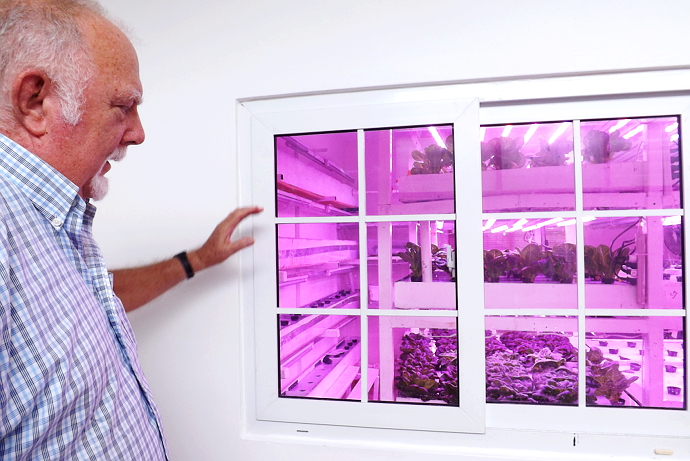To get SUSTAINABLY spaced out, know about this technology
article and photos by Eric Jackson
What to do when our planet has a much larger population that’s jammed into mega-cities and needs to be fed? Especially if, due to climate change, mobile evolving blights and rising seas, a lot of once-arable land is no longer available for food production?
Or what do to if you have a hyper-advanced case of a certain sort of gringo culture and what used to be white flight to the suburbs leads you beyond gated expat enclaves to a colony on Mars or the Moon?
For that matter, in a shorter term, what if you are a Panamanian development planner and find the country with all of these money laundering towers, hardly anyone willing to stash and wash their ill-gotten funds here anymore and few of the theoretical foreign millionaires willing to to buy one of the many vacant condos?
You might try to convert the empty condo towers, or certain floors or units in them, into farms. Dr. Gary Stutte, who was a lead research for NASA in developing zero gravity farming techniques on the International Space Station, has in recent years turned his gaze downward to apply what was learned to Planet Earth. He foresees some apocalyptic changes in population and climate that might make it not just convenient, but necessary. In November he will be in Panama as the keynote speaker for a gathering of the International Congress on Controlled Environment Agriculture. See http://icceapanama.org/en/about-2/
Don’t go to the gathering decked out as a Trekkie. It will be a serious gathering, with business, government and academic sponsors from several nations and small-time devotees like Tom Norcross, who invested about $30,000 to turn the casita next to his house into a working leaf lettuce farm. At the conference they will discuss such mundane matters as:
- Understanding Nutrients used in Hydroponics
- Understanding Technology Used in Producing Greenhouse and
- Vertically Farmed Produce
- Learning the latest research available on controlled environment crops
- How LED Grow Lights impact photosynthesis and plant growth
- Learning new production techniques
- Managing Business
- Automation and Robotics
- Blockchain
It’s a part-time gig for Norcross at the moment. If it’s to grow into something big, more likely he will be franchising small-scale systems like the one he runs now, or consulting with others, perhaps those involved in production on grand scales. For now, his main expense is the electric bill but he expects that in the large operations to come in Latin America and the world the main costs will be for labor.
Some of you old burnouts may remember the grow light and marijuana plants in the closet. The heat and electric bills were what would clue the narcs in about what you were doing if you got to scales brazen enough. That was before LED grow lights made both of those factors more manageable. But still, mold and pests could and often did take their tolls.
Norcross runs as totally controlled an environment as he can – non-toxic, and aseptic as possible. You enter the casita through a door protected by a blower to keep insects or mold spored from coming in with you. You are then in a little vestibule before another door, with another layer of that defense. The hydroponic grow room is kept sealed off with hand-washing and a hair net before entering it. The water, nutrient solution and computerized monitors of what’s going on in the grow room are in a separate room. Norcross carries a little cellular device that lets him keep tabs wherever he goes, making sure that the temperature is appropriately cool, the carbon dioxide level is elevated just a bit from what it is outdoors, the constantly spraying and recycling solution doesn’t get too acidic or alkaline and so on.
The romaine and baby greens that are the end product? They are hydroponic, grown in a water and fertilizer solution, so not by the standard definitions “organically grown.” But they are the good stuff, unlike most Panamanian produce not sprayed with herbicides, anti-fungal chemicals or insecticides. You don’t need to rinse this stuff off before eating it and Norcross recommends that you don’t.
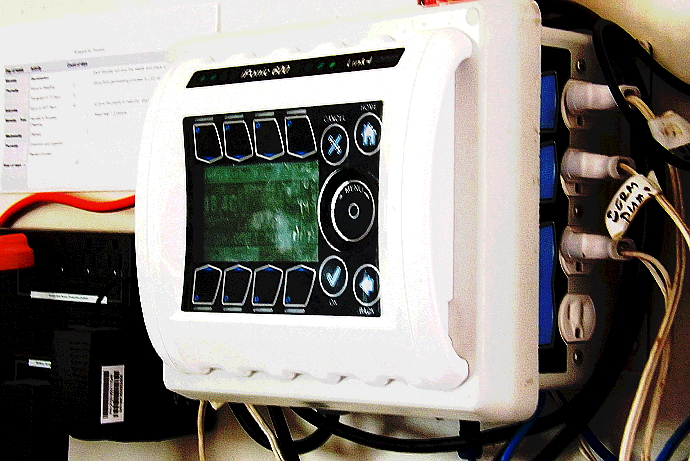
The computerized controls, perhaps the most expensive piece other than the casita itself.
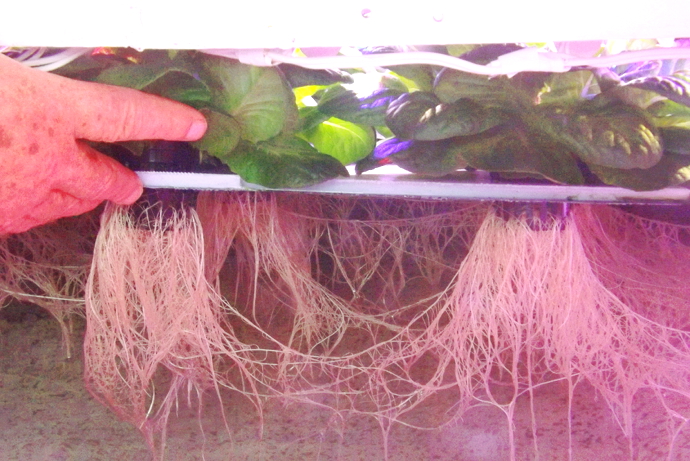
The root system -– no soil substrate here.
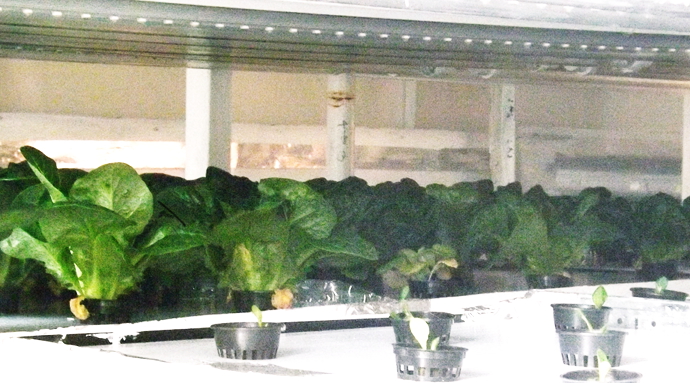
Just sprouted and transplanted into porous little cups in the foreground, almost ready to harvest behind.
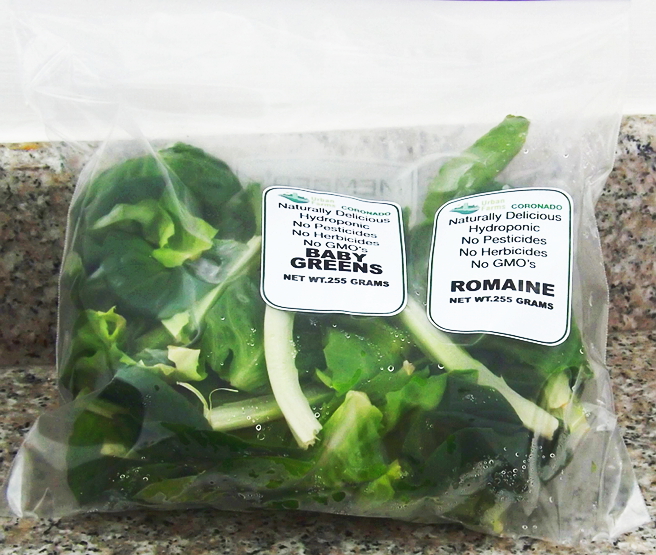
Ready to be the vegetable course in your tuna on pan de queso sandwich.
These links are interactive — click on the boxes

